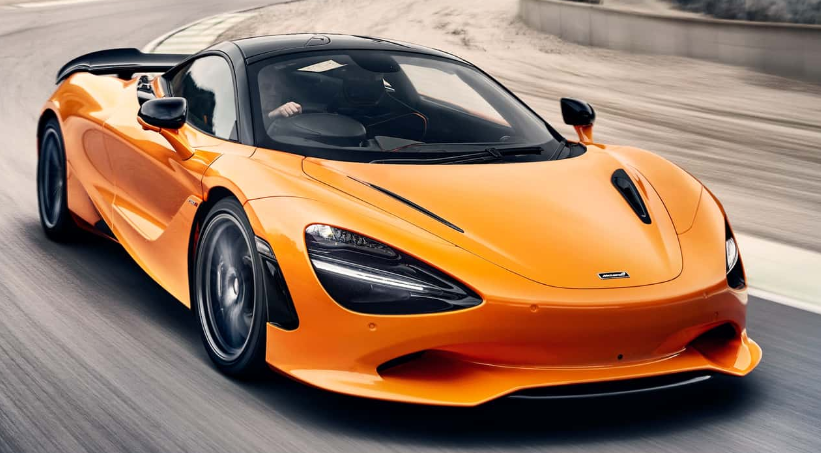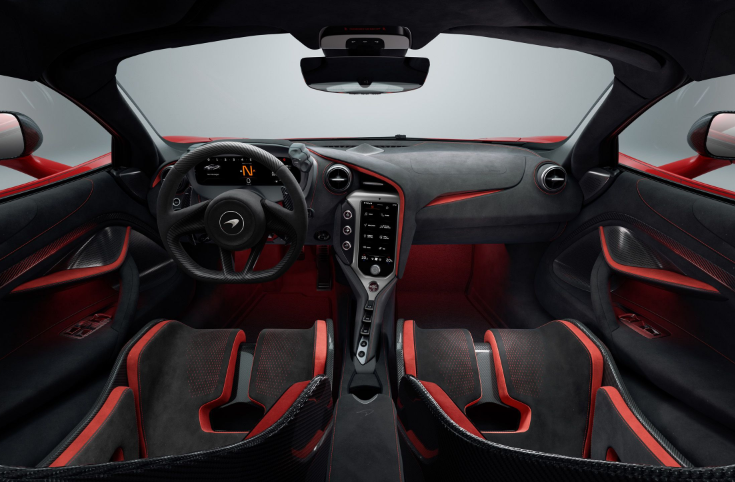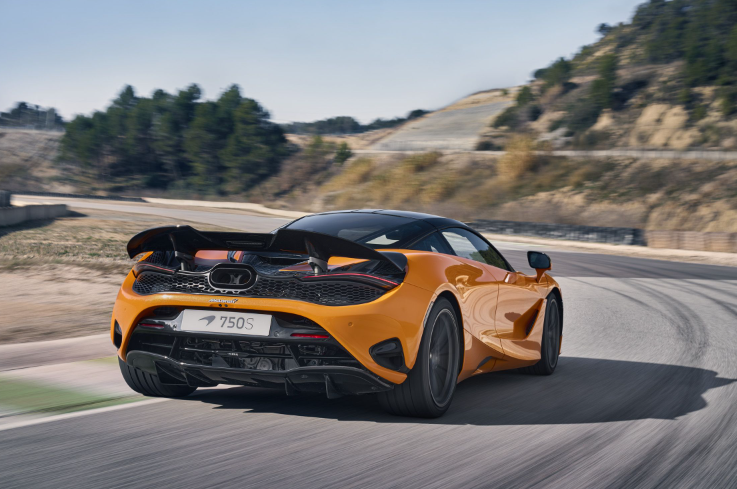The McLaren 750S of 2024 is not significantly different from the 720S it replaces. The subtle exterior changes of the new McLaren 750S might lead some to jump to conclusions. They may accuse McLaren that it has given its supercar in series production a facelift. Some will predict correctly that a lot is going on beneath the 750S’ similar-looking exterior.

2024 McLaren 750S Changes
The changes made to the successor of the 720S are more evolutionary than revolutionary. McLaren claims that around 30% of the parts in the 750S are new or upgraded. The twin-turbocharged V-8 engine is still located in the middle of its carbon-fiber body, but the boost pressure has increased to give it an additional 30 horsepower and 22 pounds-feet, bringing the peak output up to 740 horsepower and 590 pounds-feet.
The 765LT track-focused flat-plane-crank V-8 shares lightweight pistons as well. Formerly separate exhaust pipes have now been merged into a single center-exit system, similar to the McLaren P1. This, we’re told, makes the 750S even more powerful and ferocious at high revs. The larger air intake in front of the rear wheels will improve cooling. A new mesh grille sits beneath the redesigned bumper.
McLaren claims that the 750S gearbox is shorter in final drive ratio, even though the power still goes to the rear wheels via a dual-clutch seven-speed automatic transmission. The 750S also has a new feature that prevents the engine from being over-revved by downshifts.
Weight-saving measures are used to optimize these mechanical upgrades. According to the manufacturer, the 750S coupe weighs up to 66 lbs less than its predecessor, the 720S (our 2018 example weighed 3161 lbs). The new carbon-fiber racing seat standard in the 750S is said to reduce weight by up to 66 pounds. A set of even lighter carbon buckets is also available.
McLaren also did its best Atkins imitation in the form of the new standard forged rims, which are said to be the lightest wheels ever used on a production model. These rollers are said to save 30.4 pounds. Add another 4 pounds to the total thanks to a new digital gauge mounted on the column, another 3.5 for the lighter windscreen, and another 4.44 pounds to certain suspension components, and it is clear that McLaren wanted to improve the car’s weight-to-power ratio.
The 750S is lighter and more powerful than ever before, and both the Coupe and Spider (read as convertible) can reach 60 mph within 2.7 seconds. The Spider with its retractable hardtop is said to be 108 pounds heavier than the Coupe and reach 124mph in 7.3 seconds–a tenth slower. Both body styles are claimed to reach a top speed of 206 mph.
A new brake package for racetracks is helping to bring these exotic animals to a halt. The kit, which includes parts inherited from McLaren Senna’s rotors and monobloc brake calipers (15.4-inch), is a combination of bits that were inherited from McLaren Senna. The front calipers are made of a single piece to resist wear and fade. The new brake boosters and vacuum pumps are supposed to improve braking performance even without an upgrade. A rear active wing that is 3.5 pounds lighter, but has a larger area, provides more downforce and helps with brake duties at high speed. Customers can choose to upgrade from the standard Pirelli P Zero rubber to either the more sticky P Zero Corsa or even the ultra-sticky Trofeo R.
The 750S comes with the third generation of McLaren’s Proactive chassis control. Customers will not have to pay an additional fee for this suspension. The PCC III system, like the PCC II on the 720S, uses a network of hydraulic hoses to reduce body roll while maintaining ride quality. PCC III features retuned dampers, revised geometry, and lighter springs and dampers. According to the manufacturer, the spring rates will be softer at the front of the car and stiffer at the back.
The 750S has a 6mm wider front track than its predecessor. The car uses the same hydraulic steering system as before, but now it has a faster ratio. McLaren’s representative explained that the hydraulic setup is what defines their brand and they cannot switch to a more modern system.
Interior & Features
The 750S is not much different than the 720S. There’s also a new infotainment touchscreen system with an 8.0-inch screen that supports Apple CarPlay. Android Auto users will have to wait. There’s also customizable ambient lighting in the cabin, and a Bower & Wilkins audio system is available for those who want to rock out.
The steering wheel now has power adjustments and the driver can access individual drive modes without having to remove their hands from the wheel. McLaren Control Launcher allows drivers to configure their preferred drive-mode settings, and then activate or deactivate these on the fly.

McLaren provides a clear panel that allows owners of coupes to see the V-8 engine behind them. A front-axle lift system is another desirable feature. It now raises the nose of the car in just 4 seconds, instead of 10 It’s hard to tell that the car has a nose with a front splitter extended from the lower fascia. This is hardly noticeable compared to the smaller space between the “eye sockets”. The area around the headlights can be painted in the same color as the body or decorated with carbon fiber.

2024 McLaren 750S Price & Release Date
The 2024 McLaren Spider starts at $352,740 and the coupe version at $331.740. The first McLaren 750S models are expected to be on the road in the third quarter of this year.